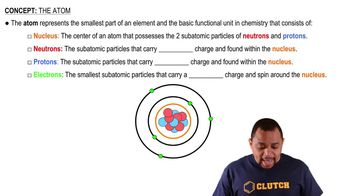Textbook Question
What are the molecular (formula) weights of the following substances? (b) C4H8O2 (butyric acid, responsible for the odor of rancid butter)
 Verified step by step guidance
Verified step by step guidance



What are the molecular (formula) weights of the following substances? (b) C4H8O2 (butyric acid, responsible for the odor of rancid butter)
What are the molecular (formula) weights of the following substances? (c) CF2Cl2 (a chlorofluorocarbon that destroys the stratospheric ozone layer
What are the molecular weights of the following pharmaceuticals? (c) C16H16ClNO2S (clopidogrel, inhibits blood clots)
What are the molecular weights of the following herbicides? (a) C6H6Cl2O3 (2, 4-dichlorophenoxyacetic acid, effective on broadleaf plants)